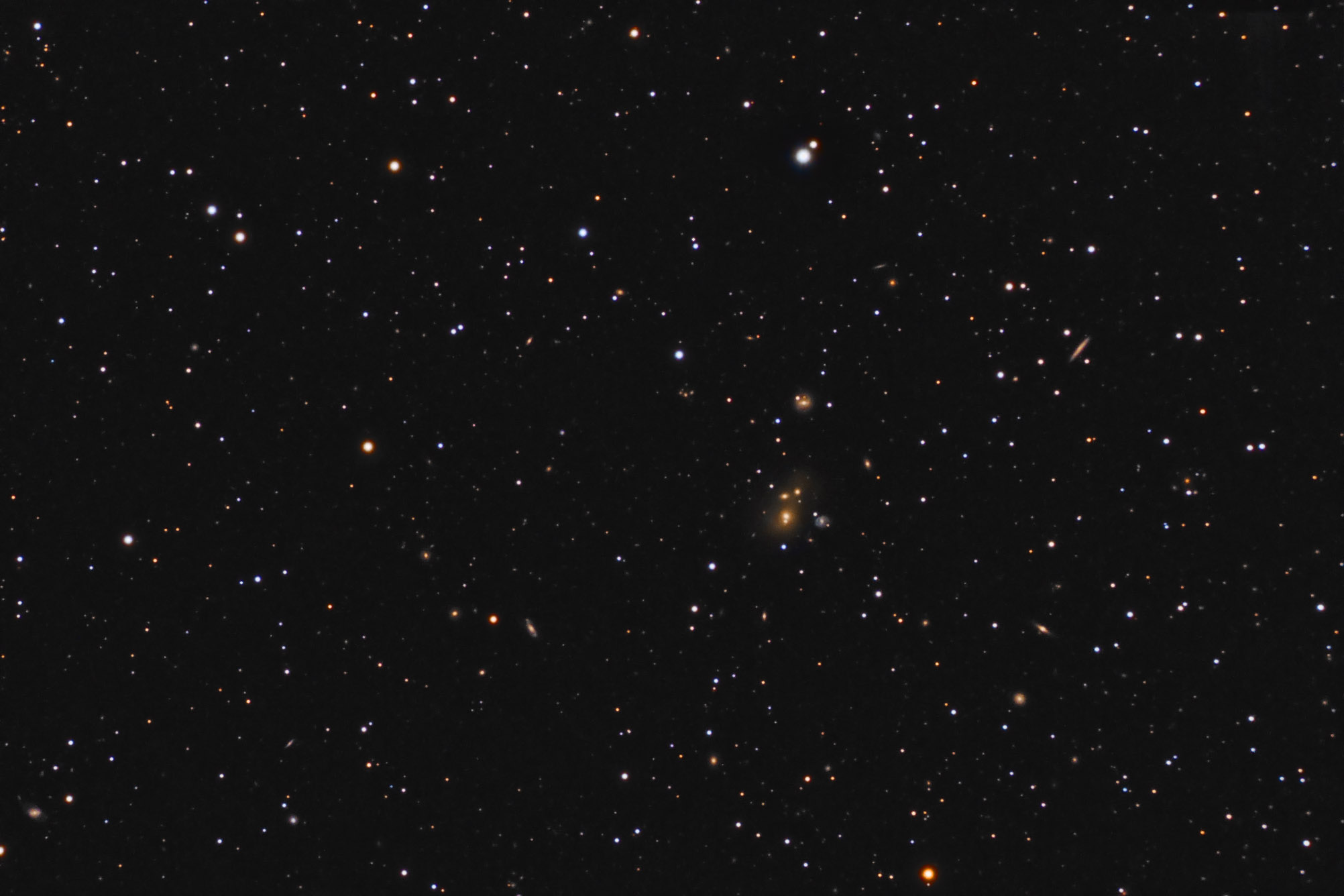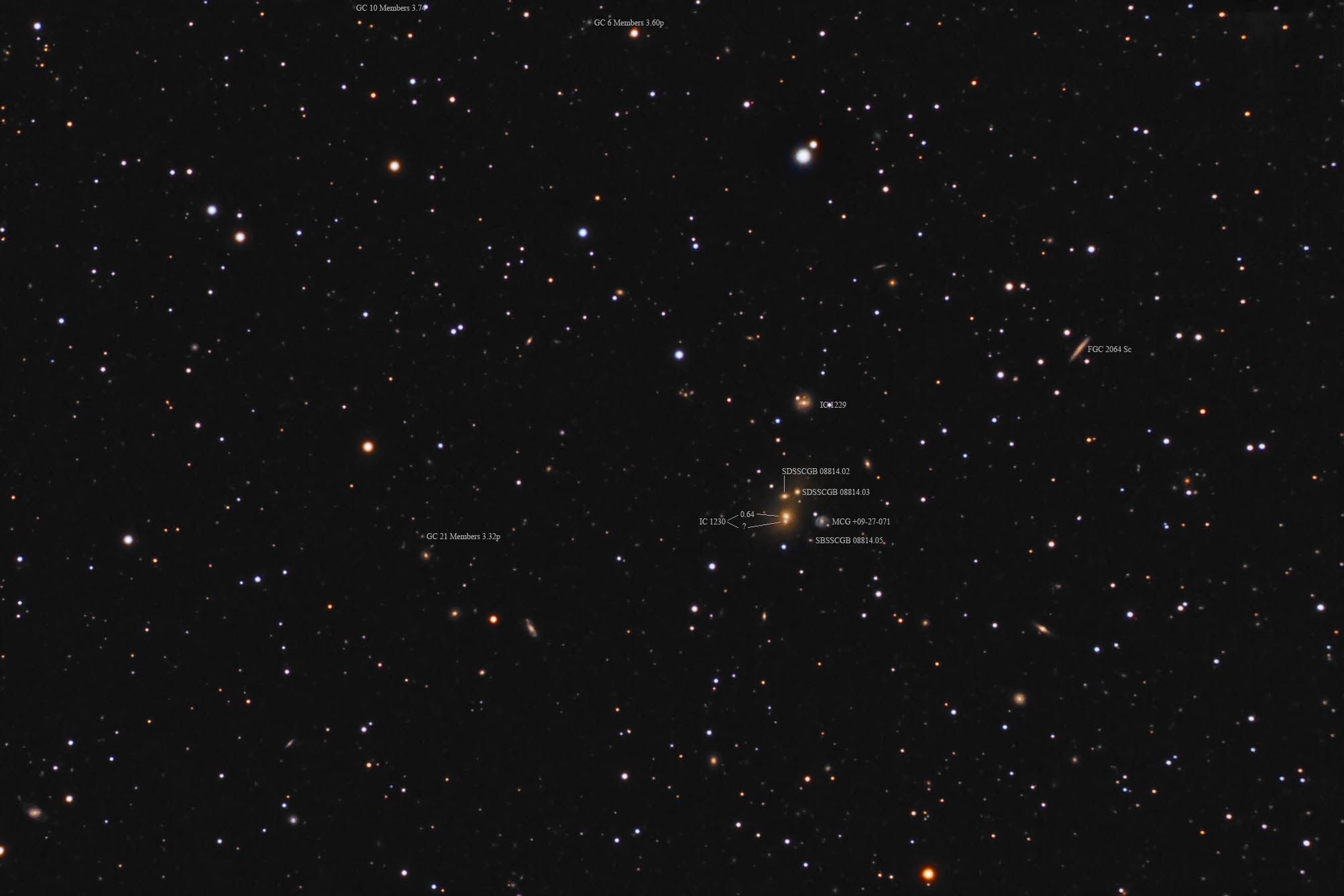| Description | Images |
Object name: IC1229Designation(s): IC1229, IC1230, IC 1230 is a pair of galaxies along with two others that appear to be in a common large halo. Only the northern galaxy has any distance data. That puts it 640 million light-years distant in very northern Hercules. The other two sharing the northern part of the halo carry rather the obtuse designations of SDSSCGB 08814.02 and .03 left to right (east to west). This is because the group of 5, these two the blue spiral and IC 1230 (the pair) is the SDSSCGB 08814 galaxy group. Only 4 are in the common halo. How many are actually part of the same physical group I can't determine. The halo is about 350,000 light-years across in my image assuming the 640 million light-year distance. The blue spiral would be 90,000 light-years across if part of the group. So its size does fit with it being a true member. But it would fit at half that size and distance as well. That doesn't help much. Still, the huge halo does seem to argue that the 4 elliptical-like galaxies are physically related and have contributed stars to the huge halo. Related Designation(s):2MASS J16445881+5118291, 2MASX J16445880+5118291, 2MASXi J1644588+511829, GALEXASC J164458.99+511830.1 , IC 1229, IC 1230, IC1229, IC1230, MCG +09-27-072, PGC 058902, SDSS J164458.82+511829.0, |

